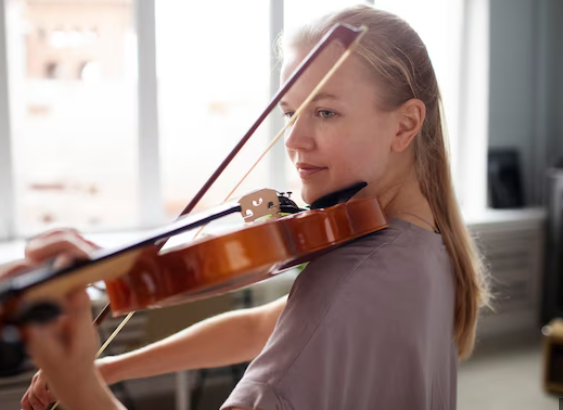Teaching the violin requires a deep understanding of technique, performance strategies, and effective instructional methods. A skilled Violin Teacher in San Francisco not only helps students master the fundamentals but also guides them toward advanced playing techniques and confident stage performances. By incorporating specialized teaching methods, violin instructors can help students refine their skills and develop their musicality.
1. Enhancing Bow Control and Articulation
A well-developed bowing technique is crucial for expressive violin playing. Teachers can guide students in improving their bow control by:
-
Encouraging long, even bow strokes to create a smooth and consistent tone
-
Introducing various bowing techniques such as spiccato, détaché, and martelé
-
Emphasizing bow pressure and speed variations to enhance dynamic control
By focusing on bowing mechanics, a Violin Teacher in San Francisco can help students achieve greater expressiveness and articulation in their playing.
2. Strengthening Finger Agility and Intonation
A strong left-hand technique is essential for accurate intonation and fluid note transitions. To improve finger agility, teachers should:
-
Assign finger independence exercises to develop coordination
-
Incorporate position shifting drills to ensure smooth transitions
-
Focus on vibrato development to add warmth and emotion to the music
By refining left-hand techniques, students will gain precision, speed, and musical confidence.
3. Teaching Advanced Bowing Techniques
Introducing students to advanced bowing techniques broadens their playing abilities. A Violin Teacher in San Francisco can guide students through:
-
Col legno – using the wooden side of the bow for percussive effects
-
Sul ponticello and sul tasto – creating different tonal colors by adjusting bow placement
-
Ricochet bowing – using controlled bow bounces for fast passages
These techniques allow students to experiment with sound textures and enhance their musical interpretations.
4. Developing Stage Presence and Confidence
Performance skills are just as important as technical proficiency. Teachers can help students build confidence by:
-
Organizing mock performances to reduce stage anxiety
-
Encouraging participation in recitals and competitions
-
Focusing on body posture and expressive movement to enhance stage presence
By integrating performance training into lessons, students will feel more comfortable and prepared for live audiences.
5. Expanding Repertoire for Musical Growth
A well-rounded violinist should explore various musical genres. Teachers should expose students to:
-
Classical pieces like Bach and Mozart for technical mastery
-
Romantic compositions from Tchaikovsky and Brahms for expressive playing
-
Modern styles, including jazz and contemporary violin techniques
Encouraging diverse repertoire allows students to develop their unique artistic identity.
6. Incorporating Technology for Effective Learning
Leveraging modern tools can enhance violin instruction. A Violin Teacher in San Francisco can:
-
Use apps for rhythm training and ear training
-
Record student performances for self-assessment
-
Introduce electric violins and effects pedals for creative exploration
Blending technology with traditional techniques makes learning more interactive and engaging.
Conclusion
A dedicated Violin Teacher in San Francisco plays a vital role in shaping aspiring musicians. By focusing on advanced techniques, improving stage confidence, and integrating innovative teaching methods, instructors can help students reach their full potential. Through expert guidance, violinists can refine their skills, embrace musical expression, and perform with confidence.

